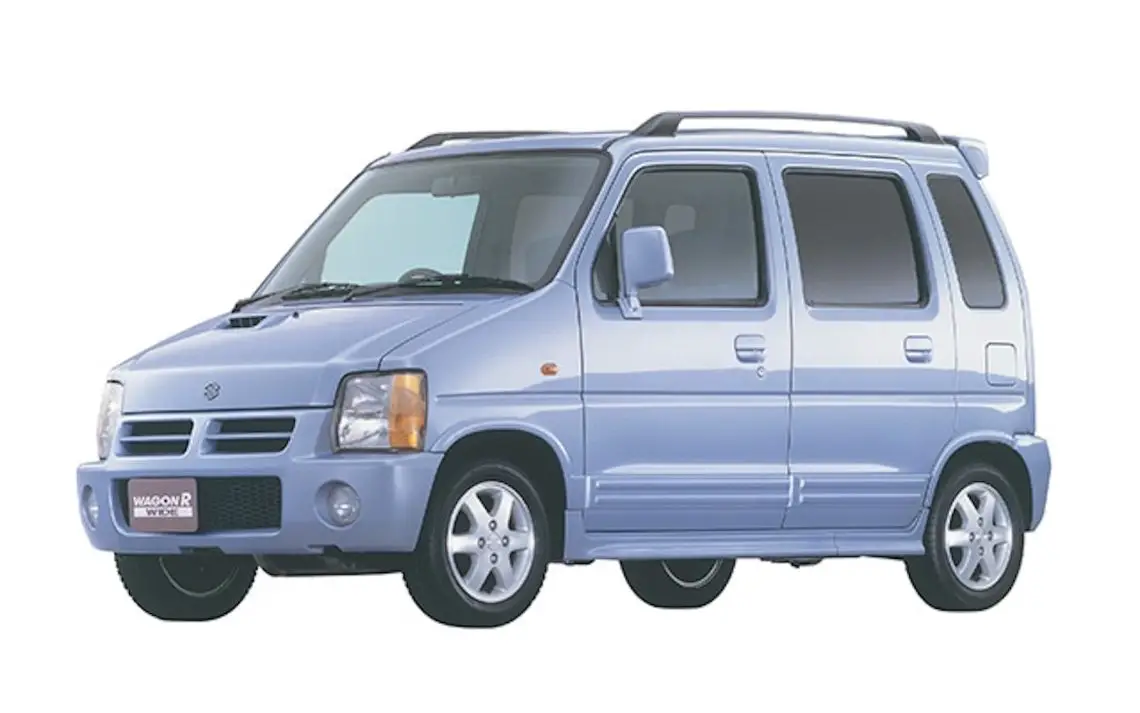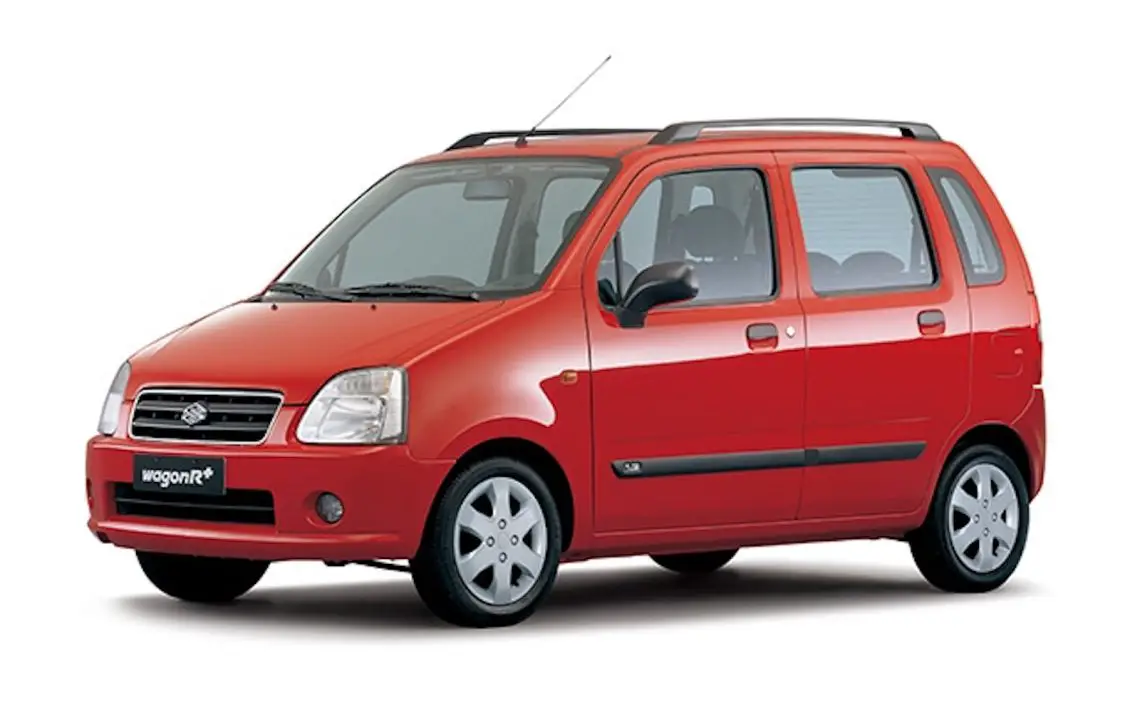Suzuki Wagon R+ – everything you need to know
To start directly with space. Even if you are two meters tall, you are still perfectly comfortable behind the wheel in the Suzuki Wagon R+. For a compact car, there is a lot of headroom. Of course, you can see that in the high roofline. The seating position is also higher than usual so that if your legs are long, your knees won’t get tangled with the steering column or dashboard.

Legroom in Suzuki Wagon R+
For the rear passenger, headroom in the Wagon R+ is equally substantial. Legroom does not hold up, especially when the front seats are pushed far back. Boarding is smooth thanks to high doors and a rectangular opening. Behind the fold-down rear seat is a cargo area that fits two crates side by side. Furthermore, it is stacking up to the eaves.

Wagon R+ began as K-Car
The Suzuki Wagon R was introduced as a so-called K(ei)-Car. These are ultra-compact cars that offer all sorts of parking and tax privileges to owners in Japan, although those benefits have been somewhat curtailed in recent years. Maximum dimensions apply to a Kei Car. For example, a Kei Car should not exceed 3.40 meters in length and have a displacement of no more than 660 cc. However, the height of the body was subject to a generous limit of up to two meters, so quite a few remarkably tall compact cars were designed.
Angular body
Suzuki released the Wagon R in Japan back in 1993. It had an uncompromisingly angular body with as much interior space as possible. The five-door variant was brought to Europe in 1998 and then under the name Wagon R wide or +. The + meant that the European version was slightly wider on the wheels and had a larger engine: not 660 cc but a 1.0-liter of 48 hp.

First-generation Wagon R+
The first-generation Suzuki Wagon R+ is 1.70 meters high, 1.60 meters wide and just over 3.50 meters long. With its comparatively long wheelbase of 2.30 meters, this model treats you to plenty of interior space. You may be surprised, but often you can put much and also bigger stuff in the Suzuki than in, say, a Volkswagen Golf.
Striking aluminum bracket
You can also recognize the first generation of the Wagon R+ by the large aluminum bracket to open the tailgate. One of those types of door handles you sometimes see on clunky refrigerators. The angular shape didn’t really appeal in Europe, so you won’t find many examples of the first generation as used cars. More are from the second generation of the Wagon R+, which was co-designed with General Motors. It came out in 2000 and was also sold by Opel as the Agila.

Engine choice Wagon R+
Meanwhile, the engine selection for the Wagon R+ had expanded to include a 1.2-liter of 56 kW (76 hp). That one delivered significantly better performance. The Suzuki additionally became a smooth car, which incidentally required some attentive steering in strong crosswinds. The height combined with a weight between 850 and 900 kg then played tricks on him.
Facelift Wagon R+
In 2003 comes a facelifted Suzuki Wagon R+. That gets a 1.3-liter gasoline engine of 69 kW (94 hp) and also a diesel version is available with 51 kW (69 hp). By the way, versions of all generations of the Wagon R+ have been released with automatic transmission.

